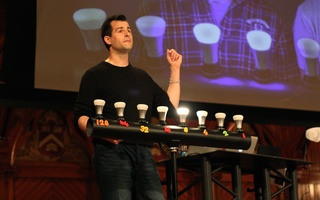Sheiber says students frequently doubt the software because they misunderstand its function. Software that determines plagiarism outright, he says, seems like an impossible tool for any course to have.
"And we don't," Sheiber says. "We have a computer aid program that helps people determine plagiarism."
"People who have experience reading code can have a much better notion of what constitutes inappropriate similarities in code," Sheiber says. "The decision about what constitutes plagiarism is made not made by software--it's made by the people."
And yet the idea that the software is a myth persists.
Sheiber says he once interviewed a TF for the course who had himself graduated from the course. At the end of the interview, the alum begged to be let in on the secret--was the program real, he asked?
" I don't know what we could do [to convince students that] there is a program, and that it works astoundingly well, that students are found out when they go beyond collaborative project guidelines, short of repeating it," Sheiber says.
TFs, including Bodell and Yeh, say the course's instructors stress throughout the semester that the system exists.
Read more in News
Gore, Bush Seal Nominations With Huge WinsRecommended Articles
-
Cut And Paste, Catch CheatersThe Internet has become the answer to cheaters’ prayers, diminishing any chance that professors might have to identify plagiarized source
-
Fighting Plagiarism, Schools Go High-TechWhat makes Kaavya Viswanathan ’08 unusual is not the fact that she plagiarized passages from another author’s work—it’s the fact
-
Pilot Program Takes Aim at PlagiarismInstructors in one sociology course will use anti-plagiarism software to catch copycats in their class, as part of a new
-
Professors Ask Computers to Catch CheatingProfessors are more widely employing algorithms, from decades-old codes to ones created by instructors, as an automated means to detect plagiarism in student assignments.
-
 Under CS50 Policy, Accused Students Likely Left in Dark
Under CS50 Policy, Accused Students Likely Left in Dark













